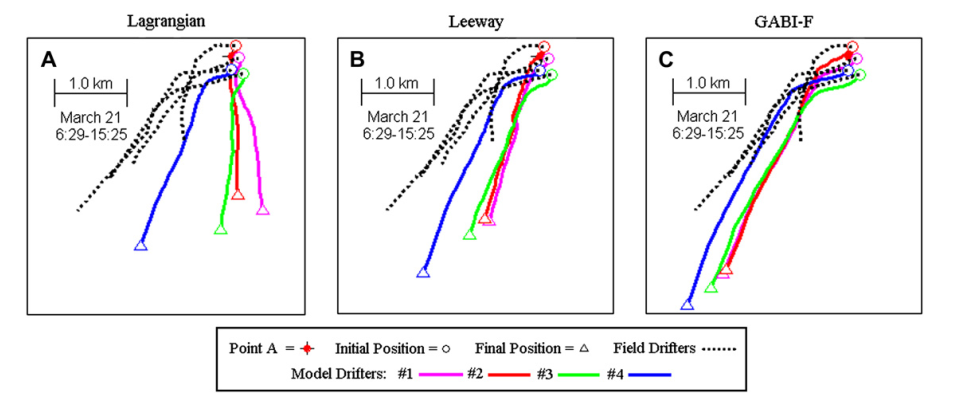Including drag and inertia in drifter modeling
ABSTRACT: The influence of inertia and drag on modelled drifter movement is investigated through comparisons of field-observed drifter paths within Marmion Marine Park, Western Australia and those simulated using the Estuary and Lake Computer Model (ELCOM). Simulated drifter paths were generated with existing Lagrangian and leeway modelling techniques, as well as with the “Generalized, Acceleration-Based Inertia and Forcing” (GABI-F) model developed herein. The GABI-F drifter model predicts drifter movement by determining the forces acting on the drifter by the surrounding fluids and incorporates the influence of winds and inertia on drifter motion. Modelling results indicate the physically based GABI-F drifter modelling method is an improvement over existing Leeway and Lagrangian methods, however, the improvement is only significant when the underlying hydrodynamic model adequately resolves time/space complexities of the flow field. Quantitative model analyses are determined suitable only over short temporal and spatial scales, past which analyses of the drifter motion only provide qualitative information relating to the model’s ability to reproduce the larger scale patterns of the field drifter motion.
EXTRACT: Figure 6.

Fig. 6. Integrated drifter paths from the D2 (March 21) simulations. (A) Lagrangian model. (B) Leeway model. (C) GABI-F model. Field drifter paths are shown with black dashed lines.

